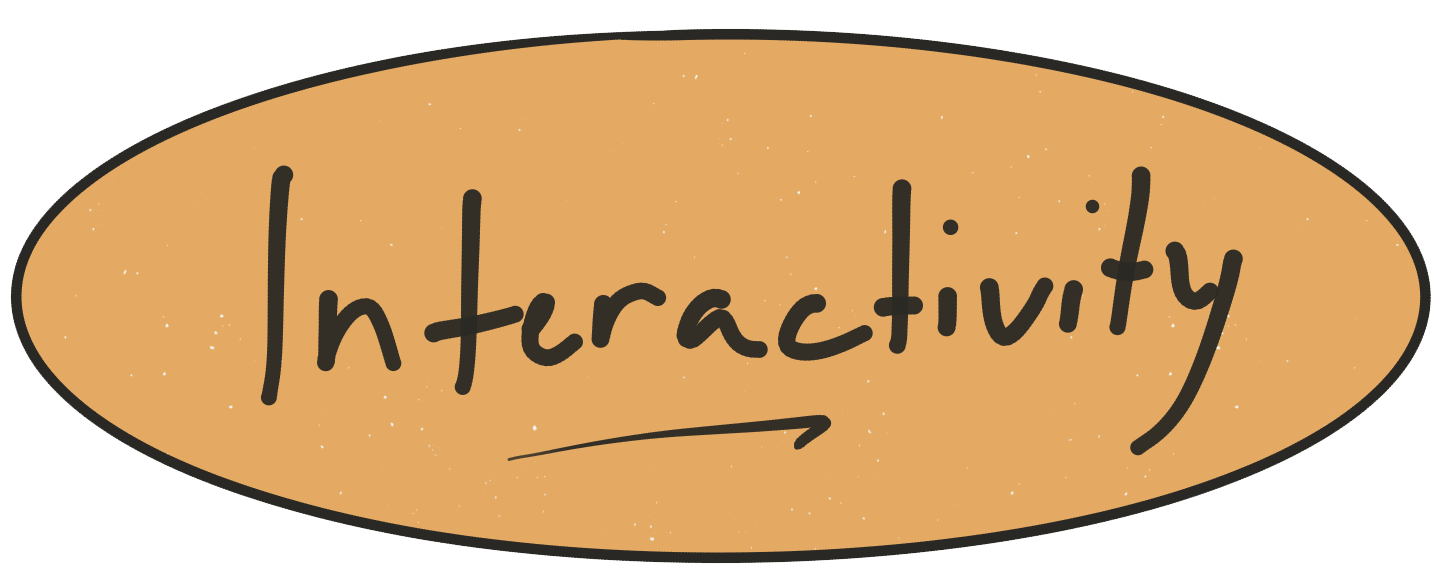As part of my Masters Degree, I researched and wrote a paper on the use of social media technologies in teaching and learning. I looked specifically at how it might relate to constructivist teaching pedagogy, and specifically, if social media could be an effective tool for assisting students in knowledge building and meaning-making activities. This post is second in a series examining the five main themes that I discovered in my research. The first post can be found by clicking here.
2 – Interactivity
In researching how to frame the use of social media within constructivist learning, the next key driver that became apparent was that of interactivity. It’s a word we hear often, particularly in terms of computer systems, software, and online portals. In the early days of the internet, information was presented on web ‘pages’, as it was expected that people would want to ‘read’ the information, just as we had been doing from books, magazines, and newspapers. Of course, it didn’t take long before online activity became more than that. Taking advantage of the two-way nature of the Internet, websites became more interactive, allowing the user to take part in the dialog, not just read static pages. I would point out that I’m not referring to trivial actions such as clicking buttons or advancing slides as interactivity. These are very low level interactive tasks, and simply getting a person to ‘click a button’ does not make an experience interactive, at least not in the learning sense.
Mental functioning of the individual is not simply derived from social interaction; rather, the specific structures and processes revealed by individuals can be traced to their interactions with others.
(Palincsar, 1998, p. 351)
In a similar fashion to the analogy above, education can benefit from interactivity. In this digital age, we can take advantage of the kind of interactivity provided by online social media and web 2.0 tools. And as above, I’m not talking about just pressing buttons. Related back to the ‘social’ part of social constructivism and social media, a good term for interactive learning would be dialogic interactivity. That is, interactive processes that encourage the learner to engage with the information (as described in my previous post) by having to examine it, process it, and then act on it. Much as we do when we are talking to each other, we take in the information, process it, and then respond.
Strategies for effective use of social media can take cues from these findings. As Beauchamp & Kennewell (2010) point out, this involves a shift from using Internet connected tools as an object IN the interaction, to using it as a tool for CONDUCTING the interaction. Here are some examples of social media tools that an educator might use to align with this strategy:
-
- Wikis such as wikia.com.
-
- Tiki Toki, an interactive time-line creator. (tiki-toki.com)
-
- More traditional message boards, such as on your school’s LMS. I’ve successfully used private Facebook groups for this as well.
-
- Other interactive curation, sharing and presentation tools such as Moxtra (moxtra.com), Kahoot! (Getkahoot.com), or Livebinders (http://www.livebinders.com/welcome/education).
- Basecamp has a free account for teachers at basecamp.com/teachers
There are hundreds of possibilities available online, many that offer free or low-cost options for teachers. As more teachers find and use these tools successfully, it is important for us to share our successes (and challenges). The goal being that once learners are able (and eager) to engage with new material and learning opportunities, then they will benefit from doing so in an interactive, two-way, dialogic process.
Click here to continue to part 3: Creativity
References
Beauchamp, G., & Kennewell, S. (2010). Interactivity in the classroom and its impact on learning. Computers & Education, 54(3), 759–766. http://doi.org/10.1016/j.compedu.2009.09.033
Palincsar, A. (1998). Social constructivist perspectives on teaching and learning. Annual Review of Psychology, 49, 345–375.

Pingback: Creating engagement with social media | Learning and Technology
Comments are closed.